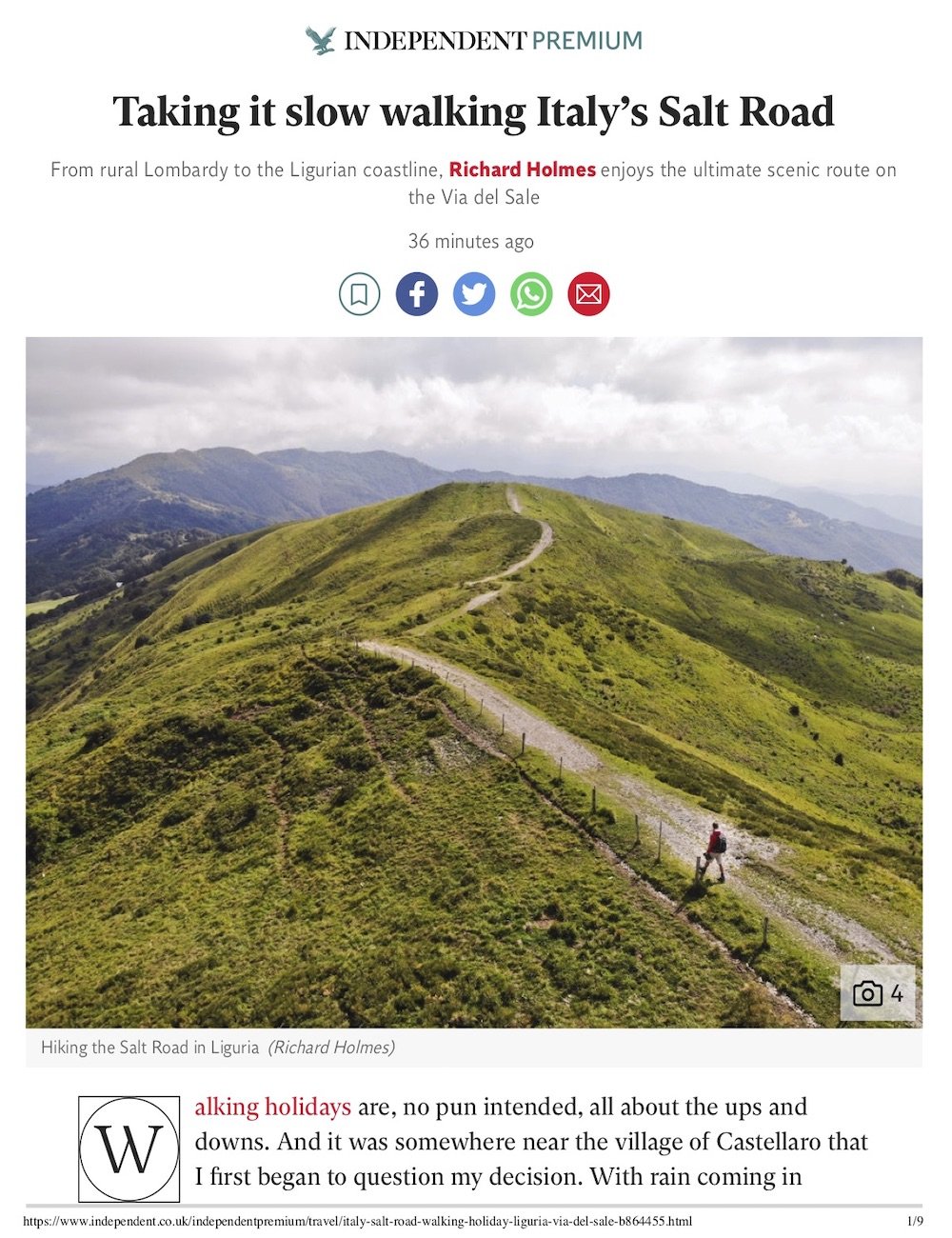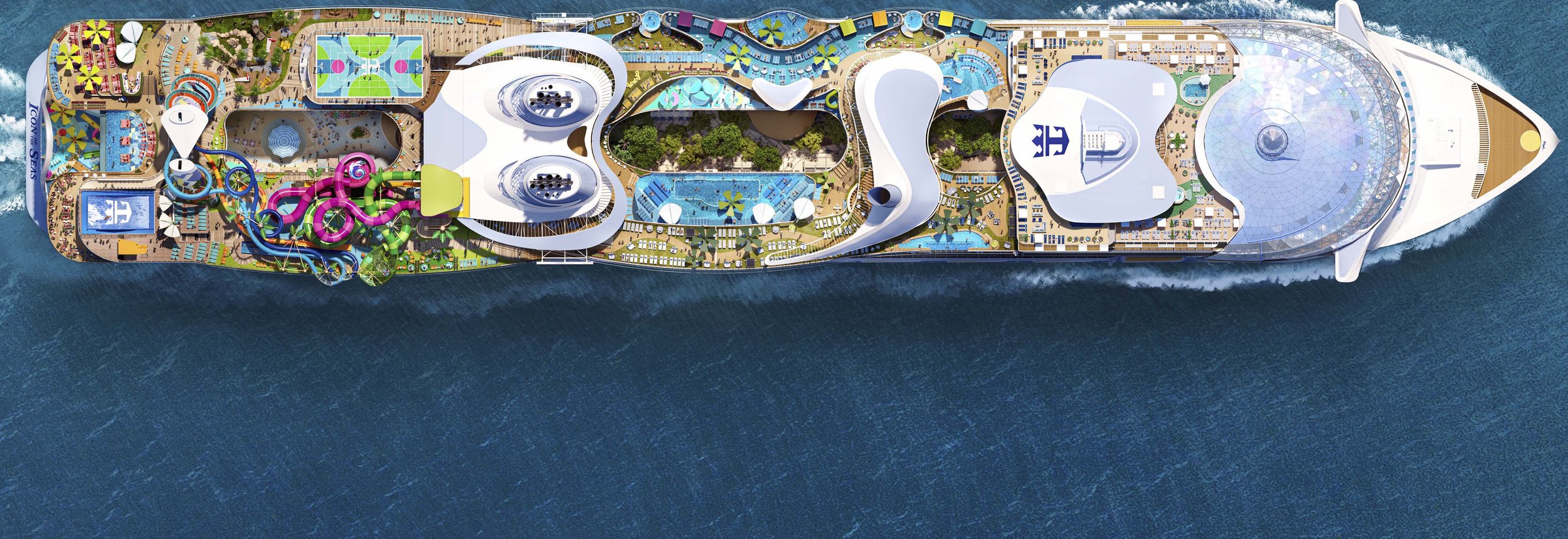First published in the Independent (UK).
Walking holidays are, no pun intended, all about the ups and downs. And it was somewhere near the village of Castellaro that I first began to question my decision. With rain coming in sideways, my muddy path turning rapidly into a muddy stream, I began to wonder why I had thought it such a fine idea to walk just shy of 100 kilometres through Liguria, from the heart of Oltrepò Pavese to the sea.
Luckily, the Via del Sale was quick to show me the answer.
That path had begun two days before in the quiet village of Mornico Losana; an hour’s train ride south of Milan. In late-summer the vines and pomegranate trees hang heavy with fruit, and it’s not hard to see why this corner of Lombardy has been dubbed ‘Little Tuscany’. What’s also ‘little’ about it is the number of tourists. Far from the crowds of San Gimignano or Siena, there are few other tourists on my trail to Camogli on the Ligurian coastline.
Not that this was any wild adventure. Salisbury-based On Foot Holidays organises self-guided walking holidays across Europe. They take care of accommodation, most meals and – crucially – luggage transfers each day, leaving me the simple task of putting one foot in front of the other.
So after a comfortable night at Villa Arabella in the affable company of Paul Lizioli, who mapped out this walk to the coast – detailed maps and route guides are provided – I lace up my boots and start walking, well, to the sea. For much of the way I’ll be following the Via del Sale, a network of paths that formed the ‘salt road’ connecting rural Liguria to the sea
From the hamlet of Locanda del Molina the path traces the edge of fallow wheat fields before diving into the welcome shade of woodland. Chestnut, Downy Oak and Beech trees tower above, while the path is potholed with the muddy wallows of wild boar. Out of the woods, and with only the crunch of boot on gravel to break the silence, the red-and-white route markers of the Club Alpino Italiano lead me upwards to my lunch break at Castello di Verde.
The views from this ancient fortress make it well worth the slog uphill. The castello dates to the 9th-century, with surrounding villages named for the trades they once supplied to the castle: Calghera (shoes), Casa Panattieri (bread) and Casa Balestrieri (crossbows).
Through more woods to Oramala Castle, once home to the Malaspina dynasty that ruled this corner of Italy, and down to Varzi. At the family-run Locanda le Cicale the welcome is warm, the beers cold, and the generous platter of cured meats – salame di Varzi, salame cotto and lardo – from the family farm. Pasta with shavings of summer truffles for dinner? Why not.
Varzi is a charming town, and once the prosperous heart of the Via del Sale. From here to the Mediterranean I’ll be walking on paths that have been trodden by salt-laden mules for centuries.
I could’ve used a mule the next morning, battling the rain and mud up past Castellaro. But the steep and slippery climb was quickly forgotten as the ridgeline flattened out past the Monte Bagnolo refuge. For here was the answer to why I’d come walk this corner of Italy.
Along the spine of Apennines the path meanders along an undulating ridgeline. Swallows dip and dive above, and the meadows come filled with summer blooms; daisies, gentians, crocuses. Bells around the necks of sturdy Charolais provide a bucolic mountain soundtrack.
Not that it’s all easy going. The climb to Monte Chiappo – the high point of the route at 1699-metres – is stiff, but worth the diversion for glorious views of the surrounding valleys. And from here it’s a downhill stroll to the cosy wood-panelled rooms of the Albergo Capanne di Cosola.
But it’s dinner, not the décor, that I’ll remember here. A half-bottle of dry Dolcetto Piedmont to go with the vast spread of cured meats my host Paolo delivers. It’s enough to feed three, though I’m a table for one. And it’s just the beginning.
Next is a tart of local mushrooms, pickled aubergine and fresh tomato. Secondi? A choice of pork ragu, tortelli with Monteboro cheese, ravioli with beef ragu, or cannellini topped with yet more mountain cheese.
"Or you try one of each?" asks Paolo with a smile.
I need every calorie the next morning, traipsing back up to the ridgeline. It’s spectacular walking though, as the path balances atop the narrow ridge, meadows and wooded valleys falling away on either side.
From the summit of Monte Carmo I bag my first views of the Mediterranean, before the path plunges downhill and on past the village of Fascia. Here dry-stone walls and fractured flagstones are a reminder of the foot traffic – human and mule – that once walked these paths, laden with salt on their way to Varzi.
On the edge of a paddock a pair of wild deer skitter off into the woods, just before the resident horses attempt to mug me for an apple. The risks of wild country walking, I guess.
Through the village of Cassingheno and down the steep woodlands track, used by hunters and mushroom foragers, towards Hotel Due Ponti, set on an island in the Trebbia River.
“You is Holmes, si?” asks Luca with a broad smile. The sixth-generation of his family to run this riverside inn, he’s reaching for a cold Birra Morretti before I can reply. In the hearth a pork shoulder is roasting over open flame, as the stereo blares Bruce Springsteen. He’s born to run, but after 20 tough kilometres since the Albergo I’m more in the mood for a sit-down. After dinner of roast pork, homemade pesto and trofie, the thin twisted pasta typical of the Ligurian coast, the rush of the Trebbia lulls me to sleep.
I’m on the home stretch the next morning. From the summit of Monte Lavagnola the Mediterranean fills the horizon, and I swear I can smell the salty tang of the ocean. Perhaps it’s weary legs wishing me on.
Past Pannesi a detour through the woods reveals the Sanctuaria Nostra Signora del Bosco, built to mark the miracle cure of a local shepherd. Then it’s one last night on the trail, at Albergo Caprile in the little town of Calcinara. The garden terrace looks down the valley to the sea, which makes its presence felt on the menu: octopus terrine with piquant white anchovies, squid ink trofie for secondi, and grilled tuna to fill out the corners. For dolce? A platter-sized crostata, baked with sweet apricots.
The last day is an easy trot downhill, and by lunchtime I’m wandering the cobbled alleys of Camogli, the streets littered with bougainvillea and jasmine. Apartments in pastel-shades cling to the pebbled beach, as I unlace my boots and soak tired feet in the cool waters of the Mediterranean. A fitting end to a wander along Italy’s ancient salt road.

























